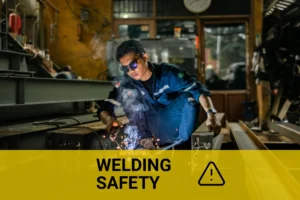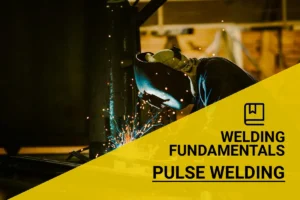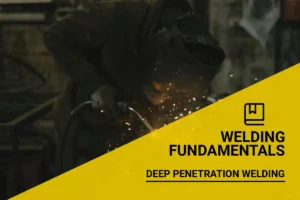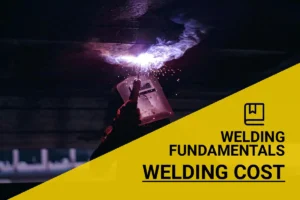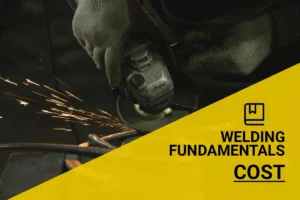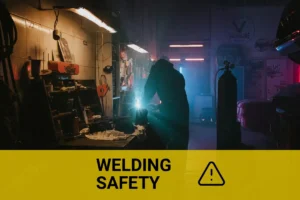What is the Most Common Type Of Welding? Explore Techniques, Applications, and Tips
Published on: June 11, 2025 | Last modified: March 4, 2025
By: Joe Carter
Common welding refers to widely used techniques that join materials, usually metals, by melting them together. It’s a fundamental process in manufacturing and construction.
It’s a question that often arises: what is the most common type of welding? Knowing this is crucial. In my experience, understanding the most common technique helps you choose the right method for your projects, preventing mistakes that could cost time and money.
In this guide, we’ll cover how the most common welding methods work, various types of common welding, steps for effective welding, factors influencing welding choices, common issues that may arise, aftercare and inspection tips, applications of these methods, and alternative options available. By the end, you’ll know what type of welding is the best fit for your needs.
Contents
- What is the Most Common Type Of Welding?
- What is the Most Common Welding Process?
- Types Of Common Welding
- Steps to Achieve Effective Welding
- Factors Influencing the Most Common Type Of Welding
- What Could Go Wrong: Common Issues
- Common Welding Mistakes and How to Avoid Them
- Applications Of Common Welding Methods
- Other Options You Can Consider
- Frequently Asked Questions (FAQs)
- Conclusion
- Additional Reading
What is the Most Common Type Of Welding?
MIG welding, or Gas Metal Arc Welding (GMAW), is one of the most popular methods. It uses a continuous wire feed, making it fast and efficient. You’ll find MIG welding in automotive repairs and construction due to its versatility and ease of use.
What is the Most Common Welding Process?
The most common type of welding is MIG welding, or Metal Inert Gas welding. It uses a continuous solid wire electrode that feeds through a welding gun. This electrode melts and joins the base metals. MIG welding operates at an average temperature of about 1,600°C (2,912°F).
MIG welding is popular because it’s fast and easy to learn. You can produce about 15 to 20 inches (38 to 51 Cm) of weld per minute, depending on the material.
If I were you, I’d definitely consider MIG welding for automotive projects. It’s one of the best types of welding for cars due to its speed and versatility. Plus, it’s a reliable technique for consistent results!
Types Of Common Welding
What are the different types of common welding?
-
MIG Welding
MIG welding uses a solid wire electrode and gas to create a strong bond. It’s the most popular type, often used for cars and thick metals. To MIG weld, you’ll need a MIG welder, shielding gas, and wire feed, all set up to create a continuous arc. Proper power settings are crucial for effective operation, so understanding how many amps a welder uses can improve your welding results significantly.
-
TIG Welding
TIG welding combines a non-consumable tungsten electrode with filler material. It’s perfect for thin materials and offers great control. To achieve good results, you’ll need a TIG welder and pure argon gas for shielding.
-
Stick Welding
Stick welding uses a coated electrode to produce a weld. It’s reliable and often used in construction and outdoor jobs. To stick weld, grab an electrode, strike an arc, and move it along the joint.
-
Flux-cored Arc Welding
Flux-Cored Arc Welding (FCAW) uses a hollow wire filled with flux. It’s similar to MIG but better for thicker materials in windy conditions. To flux-core weld, feed the wire into the welder while the flux shields the weld from contaminants. Exploring the nuances of different welding techniques can be highly beneficial, especially in understanding what is MAG welding.
-
Submerged Arc Welding
This method uses a continuously fed electrode under a blanket of granular flux. It’s efficient for large-scale projects. To submerged arc weld, set up the machine with the flux and electrode, and it handles the rest.
That covers different types of welding techniques. Let’s now take a look at the steps for effective welding.

Steps to Achieve Effective Welding
Now, we’ll cover the steps to perform the most common welding type effectively.
-
Identify the Welding Process
Choose the right welding method for your project. Common types include MIG (Metal Inert Gas) welding and TIG (Tungsten Inert Gas) welding. For instance, if you’re working on automotive repairs, MIG may be best due to its speed and efficiency. Understanding your project maximizes weld quality and minimizes costs. Sometimes, welding tools serve unexpected purposes, such as using a welder to thaw frozen pipes.
Consider your base materials, too. MIG welding excels with steel, while TIG works well with aluminum. Knowing this ensures you select the right method from the start, saving time and reducing errors.
-
Set Up Your Equipment
Adjust your welding machine’s settings based on the material and welding type. For MIG welding, use a wire feed speed of 100–300 inches per minute (254–762 Cm/min) for optimal results. Incorrect settings may lead to insufficient penetration or excessive spatter.
I recall when I didn’t adjust my settings for thin metal, and the results were a mess. Proper adjustments save on rework and material costs. Familiarize yourself with your equipment’s manual—it’s a lifesaver.
-
Prepare the Work Surface
Clean your welding surfaces thoroughly to remove rust, paint, or debris. A clean surface helps the weld penetrate properly, reducing defects. For most metals, light grinding or sanding should suffice. Proper technique is essential in ensuring quality results, and it’s crucial to understand how to avoid spatter in welding.
If I were you, I’d invest in a wire brush and cleaning solvent. It’s well worth it for the quality of your welds. Remember, good output begins with a solid foundation!
-
Conduct the Welding
Start the welding process by maintaining the right travel speed and angle. A 90-degree angle delivers optimal penetration. Aim for a steady hand; your welding speed should match the specific welding guidance parameters you set earlier.
To further enhance your skills in combining these techniques, explore more about metal fabrication and welding.
For example, maintain a travel speed of approximately 20 to 30 inches per minute (50–76 Cm/min) with MIG welding for quality seams. Ensure your weld pool stays molten, adjusting your speed as necessary to achieve good fusion.
-
Finish and Clean the Weld
Once you’ve completed the weld, it’s time to clean it up. Remove slag and grind off excess material for smooth edges. This can greatly improve the weld’s appearance and functionality.
Use a wire wheel on a grinder for thorough cleaning. Trust me, finishing properly makes a huge difference in the final product. A clean weld not only looks professional but also ensures long-lasting durability. For those considering welding projects, it’s beneficial to explore the costs associated with welding.
You should now have a good understanding of effective welding techniques and processes. In the next part, we’ll discuss key influencing factors.
Factors Influencing the Most Common Type Of Welding
What factors impact the choice of welding method for different applications?
-
Material Thickness
Thicker materials, typically over 6 mm (0.24 In), often require techniques like MIG (Metal Inert Gas) or TIG (Tungsten Inert Gas) welding. For thinner materials, stick welding can work but may cause warping due to high heat. Knowing the significance of direct current electrode positive is crucial for effective welding applications.
-
Type Of Material
Different materials need different welding techniques. For instance, aluminum requires MIG for its excellent penetration and speed, while stainless steel needs TIG for a cleaner finish.
-
Welding Position
Consider the position, as it directly affects the technique’s success. Flat positions favor MIG, while overhead work may benefit from stick welding due to easier control.
-
Environmental Conditions
Outdoor welding, especially in windy conditions, can reduce flux-cored welding’s effectiveness. In contrast, TIG is less affected since it operates within an inert gas shield, critical for clean welds.
-
Desired Strength Requirements
Welding methods like MIG can produce strong joints, up to 90,000 psi for mild steel. For critical structural integrity, consider TIG or specialized methods like laser welding.
So far we covered the factors that influence the most prevalent welding methods. Next, let’s look at the potential issues that may arise.
What Could Go Wrong: Common Issues
Let’s now look at technical problems you may face in welding.
-
Incomplete Fusion
Incomplete fusion occurs when the weld metal doesn’t bond fully with the base metal. You can spot this by examining the weld edges. Rework the weld with proper heat and technique to fix it.
-
Porosity in Welds
It’s frustrating when you see pores in your welds. Porosity indicates improper gas shielding or contaminants. Clean surfaces well and check your shielding gas flow gauges.
-
Cracking
Cracking is a serious issue in welding. Look for cracks along the weld bead. Control your cooling rate and use the right filler material to minimize cracking.
-
Undercutting
Undercutting happens when the base metal melts away. It’s easy to identify—there’s a visible groove along the edge of the weld. Reduce your travel speed to resolve this.
-
Inconsistent Appearance
A shabby look in your welds indicates inconsistencies. Fix this by maintaining a steady hand and consistent machine settings. Regular practice helps too!
We have now covered potential problems and usual challenges in welding. Next, we will examine common mistakes and how to avoid them.
Common Welding Mistakes and How to Avoid Them
Let’s dive into some common pitfalls in welding and tips to steer clear of these issues.
| Mistake | Description | Prevention Tip |
|---|---|---|
| Incorrect Settings | Using wrong voltage or amperage can lead to weak welds or burn-through. | Always refer to the material thickness chart for recommended settings. |
| Poor Joint Preparation | Dirty, rusted, or poorly aligned joints can cause weak welds. | Clean steel surfaces with a grinder before welding. |
| Welding Speed | Traveling too fast can lead to lack of penetration. | Practice steady movements and monitor your travel speed carefully. |
| Heat Control | Applying too much heat can warp materials. | Control heat input by adjusting voltage and travel speed appropriately. |
| Using Wrong Filler Material | Mismatch between base and filler materials can lead to failure. | Always match your filler material to the base metal for stronger welds. |
These mistakes can cost you time and money. With a little attention, you can polish your skills and achieve great results every time.
Applications Of Common Welding Methods
I’ve known people who use MIG (Metal Inert Gas) welding for automotive repairs. However, it has many applications, such as:
- Construction Industry: MIG welding is popular for structural steel fabrication because it’s fast and produces strong welds. It’s ideal for building frames and supports.
- Aerospace Manufacturing: TIG (Tungsten Inert Gas) welding is valued here for its precision. It’s essential for welding thin materials, ensuring lightweight yet sturdy components.
- Shipbuilding: Flux-Cored Arc Welding (FCAW) excels in large structures, like hulls. It effectively joins thick metal with strong, durable joints, making it perfect for marine environments.
- Pipeline Construction: Stick welding (SMAW) is favored for underground pipelines. It performs well in varying temperatures, ensuring reliable joint integrity.

Other Options You Can Consider
Alternative methods can help you achieve similar results to the most common types of welding. For lighter materials or thin sheets, consider TIG welding (Tungsten Inert Gas), which allows for precise control. Or maybe use MIG welding (Metal Inert Gas) for faster work on larger projects like cars; it’s often preferred because it’s easy to learn and produces strong welds with minimal cleanup.
For unique projects, you might lean toward oxy-fuel welding, which is great for cutting metals too. It’s perfect if you’re working with softer materials. Also, there’s spot welding for quick connections, ideal in mass production scenarios like auto assembly lines. After countless attempts and adjustments, you’ll find what works best for your needs.
Frequently Asked Questions (FAQs)
Now let us look at some common questions I typically get asked about welding.
What Type Of Welding is Best for Cars?
The best type of welding for cars is MIG welding. This method is popular due to its speed and ease of use, especially for thin metals. You can weld a typical automotive body panel using a MIG welder with a wire feed speed of around 3-4 meters per minute, making it ideal for automotive projects.
What is the Best Welding Method for Beginners?
The best welding method for beginners is stick welding (SMAW). Stick welding is straightforward and requires minimal setup, making it accessible for newcomers. It’s also inexpensive, with equipment costs as low as $200 for a basic welder, allowing beginners to start without breaking the bank. Understanding the materials and weights involved, such as how many 1/8 7018 welding rods are in a pound, can further assist beginners in managing their resources efficiently.
What Type Of Welding is Slower and Easier to Control?
TIG welding (Tungsten Inert Gas) is slower and easier to control. This precise technique allows for high-quality welds on thin materials. Many welders use TIG for stainless steel work, as it provides excellent control, making it a favorite in industries needing finesse, like aerospace. Understanding the intricacies of welding systems, including the components of a GMA welding system, can enhance one’s overall welding proficiency.
What is the Cheapest Type Of Welding?
The cheapest type of welding is stick welding (SMAW). Equipment can be found for as low as $200, and it doesn’t require expensive gas setups. This makes stick welding an affordable starting point for many hobbyists and small businesses. For those seeking to enhance their setup, you might need to learn how to build a bridge rectifier for better performance.
What is the Most Universal Welding Type?
MIG welding (GMAW) is considered the most universal welding type. It works on various materials—steel, aluminum, and stainless steel—making it versatile for many projects. Plus, it’s easy to learn, taking roughly 10 hours of practice before most beginners feel confident.
Conclusion
We’ve gone through a lot, thank you for sticking it out. We covered various topics such as how common welding works, different types of welding, steps to achieve effective welding, factors influencing the welding process, common issues that could arise, aftercare, inspection tips, applications of welding methods, and other options to consider. This article tackled important details like welding fundamentals and the most commonly used methods in welding.
In closing, the most common type of welding is MIG welding. It’s known for its speed and versatility, making it a favorite among both professionals and DIYers. Happy welding is all about choosing the right process for your needs, whether you’re working on cars or pursuing other projects.
For further insights and guidance on welding techniques and practices, feel free to explore more at What is Welding.
Additional Reading
- International Institute of Welding (IIW): https://www.iiwelding.org
- Blodgett, O. W. (1995). Design of Weldments. Cleveland, OH: James F. Lincoln Arc Welding Foundation.
Joe Carter is a retired welding professional with over 40 years of hands-on experience in the industry, spanning ship repair, structural welding, and even underwater projects. Joe is a master of MIG, TIG, and Stick welding. Passionate about mentoring the next generation of welders, Joe now shares his decades of expertise and practical insights to help others build rewarding careers in welding.
MIG Welding, Structural Integrity, TIG Welding, Welding, Welding Applications, Welding For Beginners, Welding Techniques, Welding Tips
